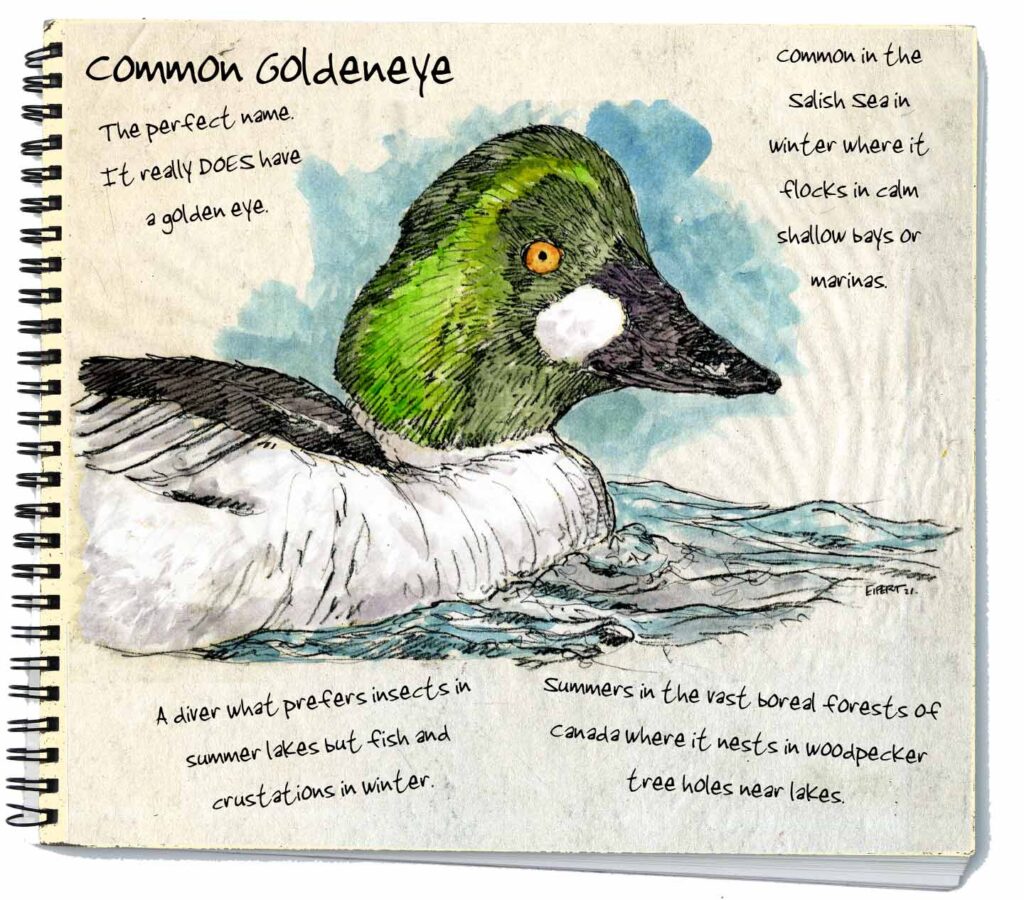Many birds seem to have names that really don’t suit them. Some that come to mind, bald eagle (lots of feathers on that head), sapsucker (doesn’t suck sap), oyster catchers (doesn’t eat oysters) and killdeer (doesn’t even come close to deer). Then, there’s this perfectly named duck. Goldeneye! I see these birds all winter long, sometimes in great rafts with other ducks, sometimes alone, but even from a distance that ‘golden eye’ stands out easily against a dark green iridescent head. Easy to spot because these are not small ducks. If you held one up, wings outstretched, it would span from your arm pit well out past your fingertips.
Common goldeneyes nest beside small lakes to the north, surrounded by conifers and hardwood forests. They often use pileated woodpecker holes that they redecorate with suit them. Here, they raise a family and feed on insects by diving in the lakes. That’s right, insects – and they seem to prefer lakes without fish (that also eat insects). In winter, goldeneyes migrate to quiet and shallow marine bays, places common in the Salish Sea. Here they dive and feed on small fish, crustaceans and shellfish. I’ve seen them in small flocks just quietly floating together, then, seemingly on a collective signal, they all dive together. It’s probably a strategy that aims to startle prey into fleeing one bird – and then the neighbor grabs it.
Larry Eifert paints and does water-stuff in Port Townsend. His large-scale nature murals can be seen in many national parks across America.

